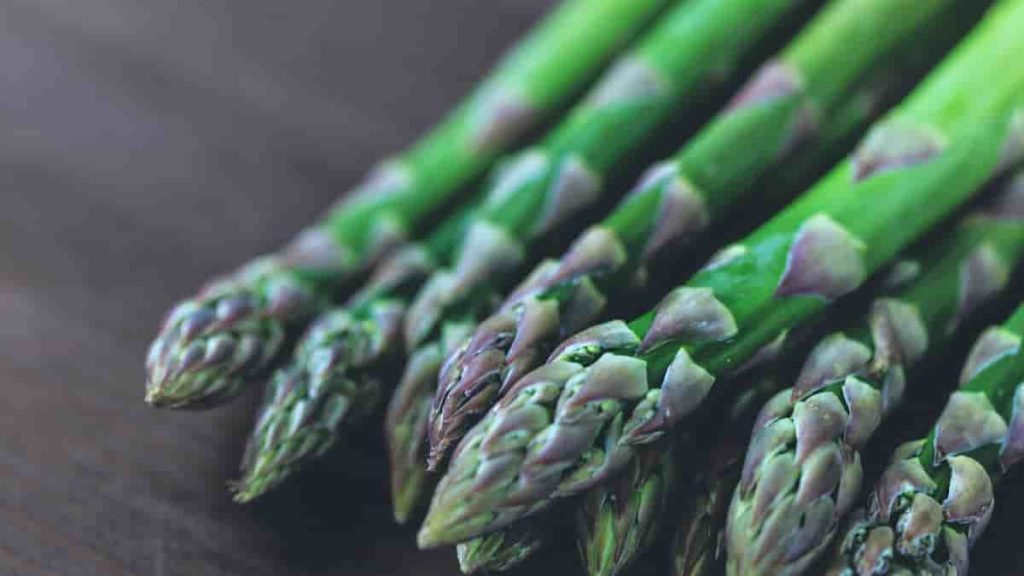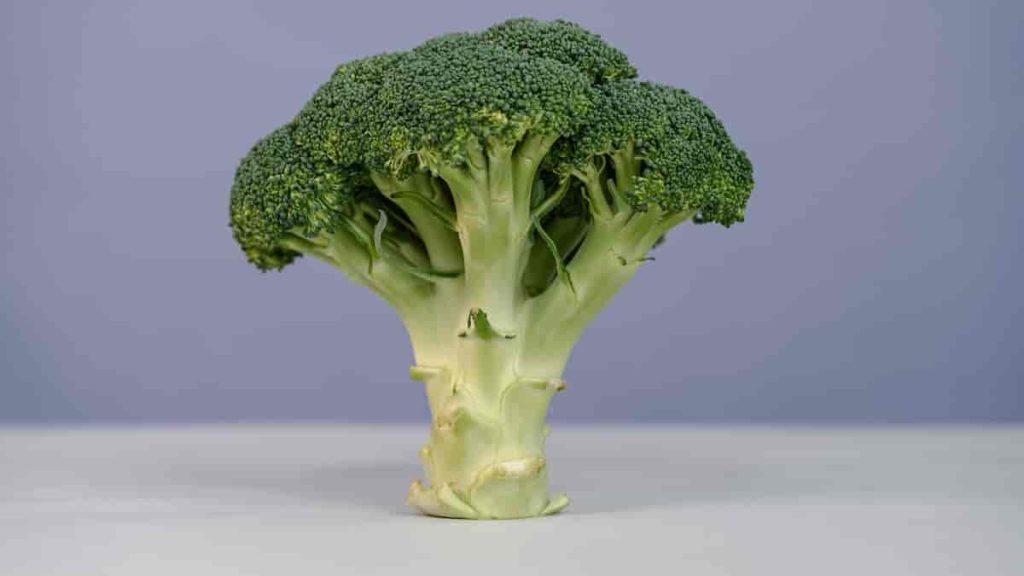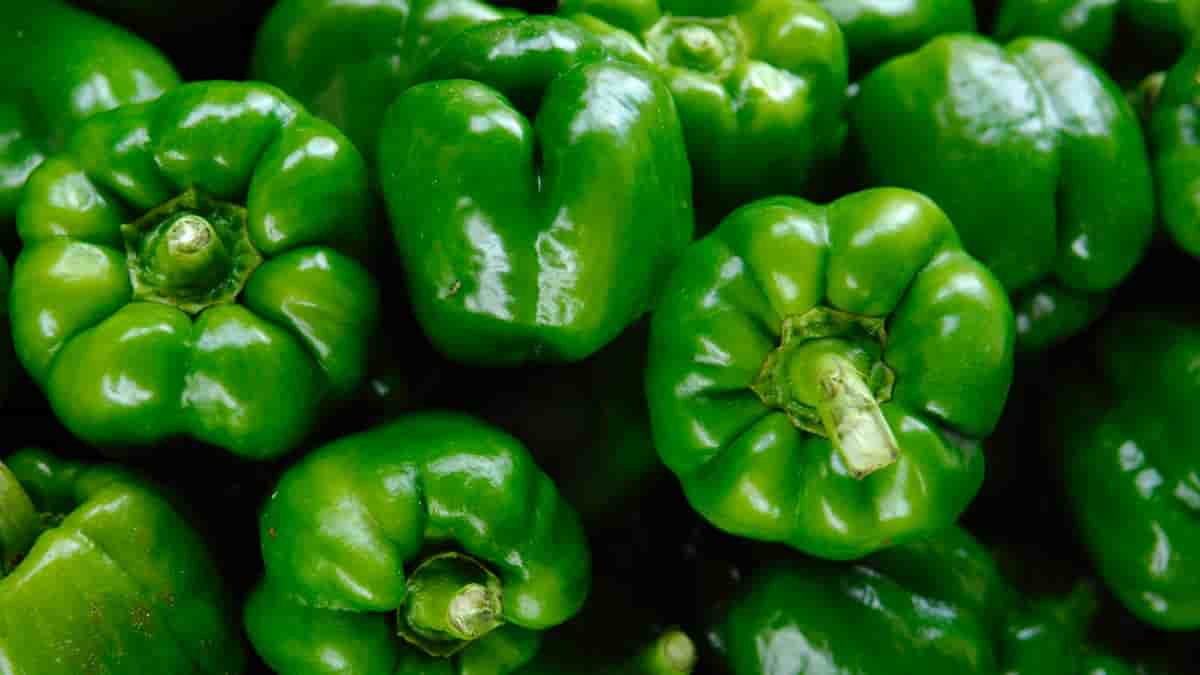Here is your complete guide to green life meal prep.
Introduction to Green Life Meal Prep
Meal prepping has become a popular trend for busy individuals seeking convenience and healthier eating habits. But have you ever considered taking it a step further by incorporating eco-friendly practices into your meal prep routine? Welcome to the world of Green Life Meal Prep, where sustainability meets deliciousness! In this article, we will explore the benefits, tips, recipes, and FAQs surrounding this innovative approach. Let’s dive in and discover how you can make a positive impact on both your health and the environment through green meal prep.
The Benefits of Green Life Meal Prep
Sustainability is at the core of Green Life Meal Prep. By adopting this approach, you can reap numerous benefits that extend beyond just having pre-portioned meals ready to go. Let’s take a closer look at the advantages:
- Reduced Food Waste: According to the Food and Agriculture Organization of the United Nations, approximately one-third of the world’s food is wasted each year. By meal prepping with a focus on sustainability, you can minimize food waste by utilizing leftovers creatively and ensuring all ingredients are used efficiently.
- Financial Savings: Green Life Meal Prep can also help you save money. By planning your meals in advance and buying ingredients in bulk, you can reduce impulse purchases and make the most of sales and discounts. Moreover, by utilizing seasonal and locally sourced ingredients, you support local farmers and potentially find cost-effective options.
- Healthier Eating Habits: By taking control of your meal prep, you have the opportunity to make nutritious choices. Green Life Meal Prep encourages the use of plant-based and whole foods, reducing the reliance on processed and packaged meals. It enables you to create well-balanced and nutrient-rich dishes tailored to your dietary needs.
- Support for Sustainable Agriculture: Opting for organic and locally grown produce not only promotes healthier eating but also supports sustainable farming practices. By choosing organic ingredients, you contribute to reducing pesticide usage and preserving soil health.
- Portion Control and Mindful Eating: With Green Life Meal Prep, you have control over portion sizes, promoting mindful eating. This practice helps you become more aware of the food you consume and can aid in weight management and overall wellness.
To summarize, embracing Green Life Meal Prep allows you to reduce food waste, save money, improve your health, support sustainable agriculture, and practice mindful eating. It’s a win-win for both you and the planet!

How to Get Started with Green Life Meal Prep
Now that we understand the benefits, let’s delve into the practical steps of getting started with Green Life Meal Prep. By following these guidelines, you’ll be on your way to creating sustainable and delicious meals.
1. Plan Your Meals and Create a Grocery List
Planning is key to successful meal prep. Dedicate some time each week to decide which meals you want to prepare and create a comprehensive grocery list. Consider incorporating a variety of ingredients to ensure a balanced diet.
2. Choose Reusable and Eco-Friendly Meal Prep Containers
Investing in high-quality, reusable meal prep containers is essential for reducing single-use plastic waste. Look for containers made from sustainable materials like glass or stainless steel. These containers not only minimize waste but also help maintain the freshness of your prepared meals.
3. Incorporate Seasonal and Locally Sourced Ingredients
Choosing seasonal and locally sourced ingredients has numerous benefits. Firstly, seasonal produce tends to be more flavorful and nutritious. Secondly, buying locally supports small-scale farmers and reduces transportation emissions associated with long-distance produce.
4. Consider Batch Cooking and Freezing Meals
Batch cooking is a time-saving technique that involves preparing large quantities of food at once and dividing them into portions for future meals. By freezing the extra portions, you ensure a steady supply of nutritious meals and reduce the need for frequent cooking.
5. Tips for Organizing Your Meal Prep Routine
Efficient organization is the key to successful meal prep. Here are some tips to help you streamline your routine:
- Set aside specific days for meal planning, grocery shopping, and meal prepping.
- Label your meal prep containers with the name and date of each meal.
- Create a system for rotating meals in the fridge and freezer to ensure freshness.
- Keep a stock of versatile ingredients like grains, legumes, and spices for easy meal variations.

Sustainable Ingredients for Green Life Meal Prep
When it comes to sustainable ingredients, there are several factors to consider. Let’s explore the key elements to keep in mind when selecting ingredients for your green meal prep.
1. Emphasize the Use of Plant-Based and Whole Foods
Plant-based ingredients have a lower environmental footprint compared to animal products. Incorporate a variety of fruits, vegetables, whole grains, legumes, and nuts into your meal prep recipes. These foods offer ample nutritional benefits while being more sustainable.
2. Highlight the Benefits of Organic and Locally Grown Produce
Choosing organic produce reduces exposure to harmful pesticides and supports sustainable farming practices. Additionally, purchasing locally grown produce reduces carbon emissions associated with long transportation distances.
3. Discuss Sustainable Protein Sources
Protein is an essential component of a balanced meal. Opt for sustainable protein sources like legumes (beans, lentils, chickpeas), tofu, tempeh, and seitan. These options are not only environmentally friendly but also offer a wide range of health benefits.
4. Importance of Avoiding Processed and Packaged Foods
Processed and packaged foods often come with excessive packaging and additives. To reduce waste and promote a healthier diet, aim to minimize your reliance on these products. Instead, focus on whole, minimally processed ingredients.
5. Ideas for Incorporating Sustainable Seafood Options
If you include seafood in your meal prep, choose sustainably sourced options. Consult seafood sustainability guides, such as the Monterey Bay Aquarium Seafood Watch, to make informed choices that support the long-term health of our oceans.
Green Life Meal Prep Recipes and Ideas
Now, let’s get to the exciting part—exploring some delicious green meal prep recipes and ideas! These recipes are designed to be both flavorful and sustainable, incorporating a range of plant-based ingredients and eco-friendly cooking methods.
1. Breakfast: Quinoa and Berry Parfait
- Ingredients:
- Cooked quinoa
- Mixed berries (e.g., strawberries, blueberries, raspberries)
- Plant-based yogurt or coconut cream
- Chia seeds or granola for topping
- Instructions:
- In a jar or container, layer cooked quinoa, mixed berries, and plant-based yogurt or coconut cream.
- Repeat the layers until the container is filled, ending with a layer of berries.
- Sprinkle chia seeds or granola on top for added crunch.
- Seal the container and refrigerate overnight.
2. Lunch: Roasted Veggie and Chickpea Salad for Green Life Meal Prep
- Ingredients:
- Mixed vegetables (e.g., bell peppers, zucchini, carrots, red onions)
- Chickpeas
- Olive oil
- Lemon juice
- Fresh herbs (e.g., parsley, basil)
- Salt and pepper to taste
- Instructions:
- Preheat the oven to 400°F (200°C).
- Toss the mixed vegetables and chickpeas with olive oil, lemon juice, herbs, salt, and pepper in a baking dish.
- Roast for approximately 20-25 minutes or until the vegetables are tender and slightly browned.
- Divide the roasted vegetables and chickpeas into meal prep containers, allowing them to cool before sealing and refrigerating.
3. Dinner: Lentil and Vegetable Curry for Green Life Meal Prep
- Ingredients:
- Lentils
- Mixed vegetables (e.g., cauliflower, peas, spinach)
- Coconut milk
- Curry powder or paste
- Garlic and ginger paste
- Onion
- Vegetable broth or water
- Fresh cilantro for garnish
- Instructions:
- In a large pot, sauté the onion, garlic, and ginger paste until fragrant.
- Add the mixed vegetables, lentils, curry powder or paste, and vegetable broth or water.
- Simmer until the lentils are tender and the vegetables are cooked.
- Stir in the coconut milk and cook for an additional 5 minutes.
- Garnish with fresh cilantro before portioning the curry into meal prep containers.
These recipes are just the tip of the iceberg when it comes to green meal prep possibilities. Feel free to experiment with different flavors, ingredients, and cooking techniques to suit your preferences.
Tips for Eco-Friendly Green Life Meal Prep
To make your green meal prep journey even more sustainable, consider implementing the following tips and tricks:
- Reduce food waste by utilizing vegetable scraps for homemade stocks or composting.
- Minimize single-use plastics by using reusable produce bags and beeswax wraps.
- Repurpose glass jars for storing homemade sauces, dressings, or snacks.
- Consider purchasing produce from local farmers’ markets or joining a community-supported agriculture (CSA) program for fresh, seasonal ingredients.
- Opt for energy-efficient appliances like induction cooktops and convection ovens to reduce your carbon footprint.
By incorporating these eco-friendly practices into your meal prep routine, you’ll further enhance your commitment to sustainability.
Read More About Nutrition 1 Cup Broccoli.
FAQs about Green Life Meal Prep
To address common questions and concerns, here are some frequently asked questions about Green Life Meal Prep:
How long can meals be stored in the fridge or freezer?
Generally, meals stored in the refrigerator can last up to 4-5 days, while properly frozen meals can be safely consumed within 2-3 months. It’s important to label containers with dates and ensure proper storage conditions to maintain freshness.
Read More About How Long Does It Take to See Results Working Out.
Can I meal prep if I have dietary restrictions (e.g., gluten-free, vegan)
Absolutely! Green Life Meal Prep is flexible and can be tailored to accommodate various dietary restrictions. There are plenty of gluten-free, vegan, and allergen-friendly recipes available that align with your specific needs.
Read More About How Yoga is Good for You.
How can I prevent my meals from becoming soggy?
To prevent sogginess, consider using separate compartments or containers for wet and dry ingredients. For instance, pack dressings or sauces in separate small containers and add them just before eating. You can also try layering ingredients strategically to maintain freshness and texture.
Read Also: Body Fat Percentages for Women.
What are some time-saving shortcuts for meal prep?
To save time, you can pre-cut and wash vegetables in advance, batch cook proteins like tofu or chicken, and prepare versatile ingredients such as grains or legumes that can be used in multiple recipes throughout the week.
Read Also: Cycling Carbs Meal Plan.
Can I meal prep if I have a small kitchen or limited storage space?
Yes! Meal prepping can be done in any kitchen, regardless of its size. Utilize stackable containers or invest in space-saving storage solutions to optimize your available space efficiently.
Read Also: The Nutrition of Zucchini.
Is meal prep good for fat loss?
Meal prep can be a beneficial tool for fat loss. By planning and preparing your meals in advance, you have better control over portion sizes and the ingredients used in your dishes. This allows you to make healthier choices and maintain a balanced calorie intake, which is crucial for weight loss. Additionally, meal prep can help reduce the temptation to eat unhealthy convenience foods or order takeout when you’re busy or tired. Consistency and adherence to a well-planned meal prep routine can contribute to achieving your fat loss goals.
Read Also: Cherries Calories.
How do you meal prep greens?
Meal prepping greens is a simple and effective way to incorporate more vegetables into your diet. Here’s a step-by-step guide to meal prepping greens:
- Choose your greens: Select the greens you prefer, such as spinach, kale, lettuce, or mixed greens.
- Wash and dry: Thoroughly wash the greens under running water to remove any dirt or debris. Use a salad spinner or pat them dry with a clean kitchen towel to remove excess moisture.
- Prep for storage: Trim off any tough stems or discolored leaves. If desired, chop the greens into bite-sized pieces for convenience.
- Store properly: Place the greens in an airtight container or resealable bag lined with paper towels. The paper towels help absorb moisture and maintain freshness. Alternatively, you can use specialized produce storage containers designed to extend the shelf life of greens.
- Refrigerate and use within the recommended timeframe: Store the prepped greens in the refrigerator and use them within 3-5 days for optimal freshness and quality.
By prepping your greens in advance, you’ll have them readily available for salads, smoothies, stir-fries, or as a side dish to accompany your meals throughout the week.
Read Also: My Protein Drink.
What are the best vegetables for meal prep?.
When it comes to meal prepping vegetables, it’s beneficial to choose varieties that hold up well over time and retain their flavor and texture when reheated. Here are some excellent vegetables for meal prep:
- Broccoli: Rich in nutrients and fiber, broccoli holds up well when cooked and reheated.
- Bell peppers: With their vibrant colors and crisp texture, bell peppers add freshness to meal prepped dishes.
- Carrots: Carrots are versatile and can be sliced, shredded, or roasted for meal prep. They retain their sweetness and crunch even after being cooked.
- Cauliflower: This versatile vegetable can be roasted, steamed, or riced, making it a great addition to meal prep recipes.
- Green beans: Green beans maintain their crispness and vibrant color when properly cooked and stored.
- Sweet potatoes: Roasted sweet potatoes can be portioned and added to meals for added nutrients and natural sweetness.
These vegetables can be included in a variety of meal prep recipes such as stir-fries, salads, roasted vegetable bowls, or as sides to accompany protein sources.
Read Also: Are Push-Ups Good for Building Muscle?
How long does meal prep stay fresh?
The freshness and shelf life of meal prepped dishes can vary depending on the ingredients used and how they are stored. Here are some general guidelines for meal prep freshness:
- Cooked proteins (e.g., chicken, fish, tofu): These should be consumed within 3-4 days when stored in the refrigerator.
- Cooked grains (e.g., rice, quinoa): If properly stored in airtight containers, cooked grains can last for up to 5-7 days in the refrigerator.
- Cooked vegetables: Most cooked vegetables, if stored correctly, can stay fresh for 3-5 days in the refrigerator.
- Raw vegetables and salads: These are best consumed within 2-3 days of meal prep for optimal freshness and crispness.
It’s important to note that individual ingredients and recipes may have different shelf lives. To ensure food safety, always store your meal prepped dishes in airtight containers, label them with the date of preparation, and follow proper refrigeration guidelines. Additionally, trust your senses and inspect the food before consuming it. If it smells or looks off or if you have any doubts, it’s best to err on the side of caution and discard the food.
Read Also: Natural Foods High in Fiber.
Conclusion
Green Life Meal Prep offers an innovative approach to meal planning that combines sustainability, health, and convenience. By adopting this eco-friendly method, you can reduce food waste, save money, support local farmers, and make nutritious choices. Through the careful selection of sustainable ingredients, thoughtful organization, and delicious recipes, you can embark on a green meal prep journey that positively impacts both your well-being and the environment. Start your sustainable meal prep adventure today and savor the benefits it brings to your plate and our planet!
Remember, Green Life Meal Prep is not only a commitment to yourself but also a contribution to a greener future. Happy prepping!
Read Also: What Is the AIP Diet?

